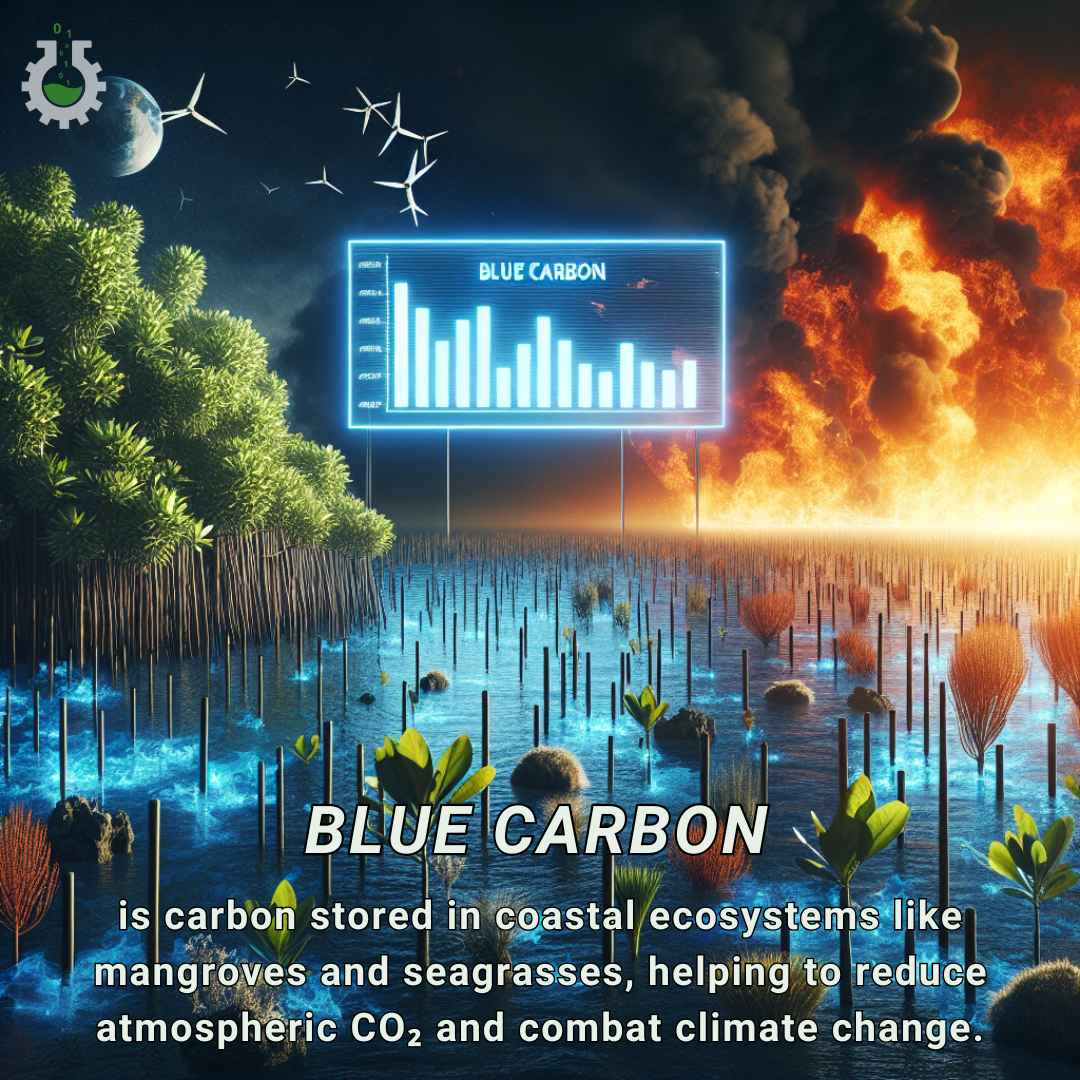November 5, 2024
Climate Change Poster Collection of the Week – Blue Carbon
Book a Demo
This week’s Climate Change Poster Collection highlights Blue Carbon, refers to the carbon captured by the world’s oceanic and coastal ecosystems, primarily mangroves, salt marshes, and seagrasses. These ecosystems are remarkably efficient at absorbing carbon dioxide from the atmosphere and storing it in their biomass and sediments, making them vital allies in the fight against climate change. Unlike terrestrial forests, which store carbon in wood and leaves, blue carbon ecosystems sequester carbon in the soil, often for thousands of years, creating long-term carbon sinks. Despite covering a relatively small area compared to terrestrial forests, these coastal systems can sequester carbon at rates up to ten times greater, making them disproportionately important in global carbon cycling. This exceptional capacity for carbon storage is due to the unique conditions found in these ecosystems, such as waterlogged soils that slow down the decomposition of organic matter, thereby trapping carbon more effectively.
However, blue carbon ecosystems face significant threats from human activities such as coastal development, pollution, and unsustainable aquaculture. These activities not only release stored carbon back into the atmosphere, exacerbating climate change, but also diminish the capacity of these ecosystems to sequester more carbon in the future. For instance, when mangroves are cleared for shrimp farming or urban expansion, the carbon stored in their soils is released, contributing to greenhouse gas emissions. Similarly, pollution from agricultural runoff can lead to eutrophication in seagrass meadows, reducing their health and ability to capture carbon. Protecting and restoring these ecosystems could be a game-changer in climate mitigation strategies, offering a natural solution to offset carbon emissions.
Moreover, blue carbon ecosystems provide additional benefits beyond carbon sequestration. They support rich biodiversity, offering habitat and nursery grounds for numerous marine species, some of which are crucial for local fisheries. They also protect coastlines from erosion and storm surges, acting as natural buffers that reduce the impact of extreme weather events. For many coastal communities, these ecosystems are integral to their livelihoods, providing resources for food, medicine, and tourism. Despite their potential, blue carbon ecosystems have historically been overlooked in climate policy discussions. Increasing awareness and integrating them into climate action plans could significantly bolster efforts to achieve global carbon reduction targets.
As we continue to seek innovative solutions to combat climate change, the conservation and restoration of blue carbon ecosystems should be prioritized as a critical component of our environmental strategies. By investing in the protection of these vital areas, we not only address carbon emissions but also enhance ecosystem resilience, support biodiversity, and sustain the livelihoods of coastal communities. The inclusion of blue carbon in international climate agreements, such as the Paris Agreement, and in national climate policies, could provide the necessary framework and incentives to drive meaningful action. As the urgency to address climate change intensifies, recognizing and harnessing the power of blue carbon ecosystems represents a promising pathway to a more sustainable and resilient future.
Discover an inspiring collection of climate change poster.



